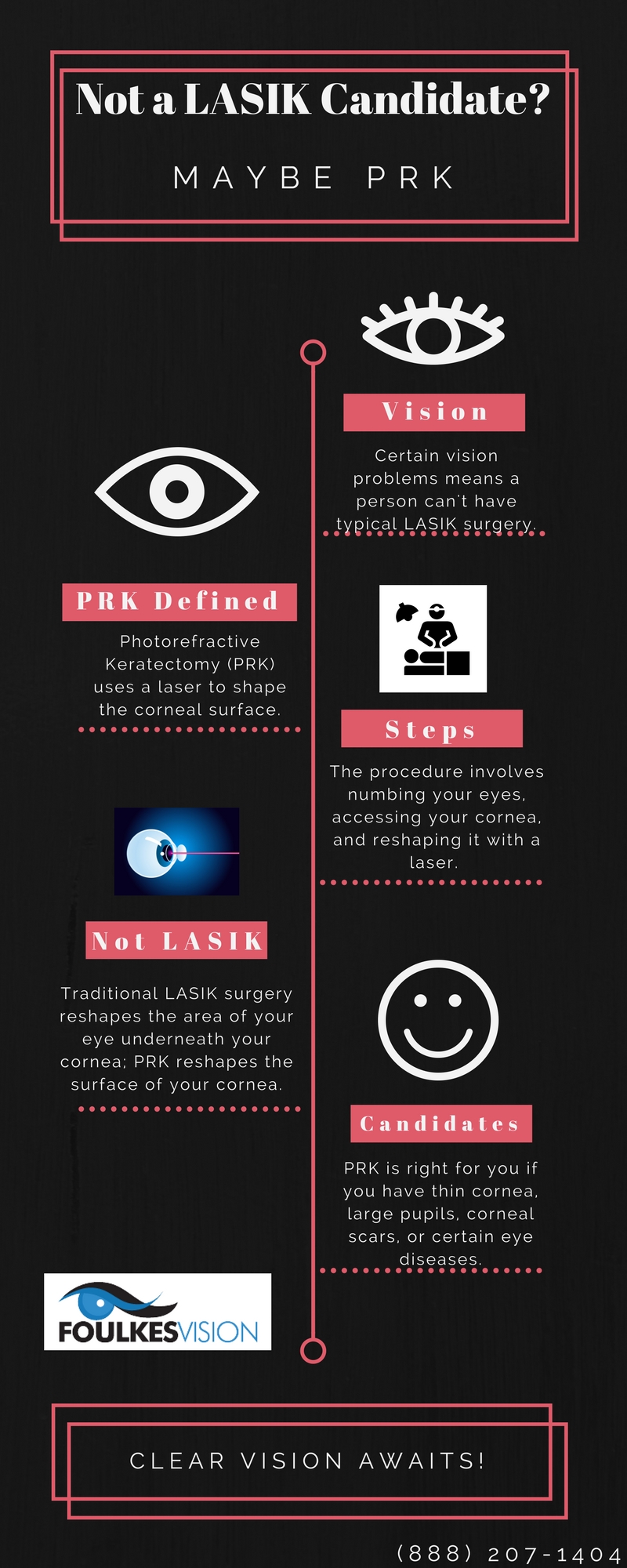Checking Out Alternatives To LASIK Eye Surgery

Content author-Spivey Bush
Many people who don't get approved for LASIK eye surgical treatment would like to know even more concerning the procedure so they can check out alternatives. The most effective choice relies on the specific qualities of your eyes.
LASIK as well as PRK both utilize an excimer laser to reshape the cornea. The difference is that with LASIK, the specialist creates a flap on the leading layer of your cornea. With PRK, no flap is developed.
1. Phakic Intraocular Lens Implants
Phakic Intraocular Lens Implants (pIOL) entail the implantation of a synthetic intraocular lens without elimination of your eye's natural lens. This allows you to continue to utilize your eye's all-natural lens for holiday accommodation. Your physician will certainly make use of numbing eye drops as well as probably a light sedative for comfort throughout this short procedure.
Throughout pIOL surgical treatment, your cosmetic surgeon creates a flap in the corneal epithelium to expose the stroma. Laser in situ keratomileusis (LASIK) or a mechanical, epi-LASIK strategy is after that used to change the corneal shape and also remove cells.
While phakic IOLs are an efficient treatment for myopia, they do not produce the very same lasting refractive security and ideal spectacle-corrected visual acuity results as laser vision modification. In addition, phakic IOLs can be associated with problems such as loss of lodging and boosted sensitivity to glare. It is very important to discuss these problems with your physician. She or he can present alternatives that might function far better for your situations.
2. PRK
PRK is a really similar treatment to LASIK, however it uses advantages to particular people who are bad prospects for LASIK due to thin corneas. It additionally uses a much safer option for clients who experience issues after LASIK. This type of surgical procedure is a wonderful solution for those with refractive errors, and also it can considerably boost vision. Nonetheless, there are unusual long-lasting negative effects, such as wearing away night vision and permanent corneal haze.
During PRK, the surgeon uses topical anesthesia to numb the eyes before positioning a speculum over them to stop blinking. The external layer of epithelial cells is gotten rid of either mechanically (using a special brush or sweeping tool), with an alcohol service, or by computer-controlled laser pulses. The excimer laser after that improves the cornea to correct the refractive mistake. When the surgery is full, the client will certainly put on an unique bandage lens to aid the eye heal effectively. Right away after the surgical treatment, your vision might be blurred or hazy and also it is very important to follow your physician's post-operative directions meticulously.
3. IOL Implants
IOL Implants are artificial lenses operatively positioned inside your eye to replace your natural lens. They are available in a number of various variations including monofocal as well as multifocal models that provide you a range of vision improvement at both range and near. Unlike transplanted body organs, IOL's are completely synthetic and because of this have the advantage of not being prone to being rejected.
Like Custom LASIK , IOL surgery modifies the form of your cornea to boost exactly how light hits the rear of your retina. This makes it simpler to see close-up things without the need for glasses or get in touch with lenses. Conventional round IOLs are monofocal and also provide clear vision for one centerpiece, either far away for driving as well as television watching or near (for analysis). The more recent accommodative IOLs, such as the Crystalens, can reduce your reliance on reading glasses for the majority of things by including an integrated ability to focus at several ranges. However, more than 80% of people implanted with accommodative IOLs in FDA medical tests still called for glasses for some range as well as near jobs.
4. RLE
RLE, also called lens substitute surgery, is one more alternative that's worth checking out if you intend to lower your dependence on call lenses and also glasses. It operates in a comparable way to LASIK, yet as opposed to re-shaping the natural material of your eye, it entirely removes it and also changes it with an artificial intraocular lens. You can pick from a range of different IOLs, consisting of monofocal, multifocal, as well as expanded deepness of focus.
This option to LASIK is optimal for patients with high refractive mistakes that aren't great prospects for laser vision correction. Nevertheless, it does not deal with presbyopia as well as LASIK, as well as the treatment can often create troubles that can bring about long-term severe loss of vision. These issues include flap issues, dry eyes, as well as vision regression. LASIK Experience will certainly review the risks of RLE with you prior to advising it as a therapy alternative.

